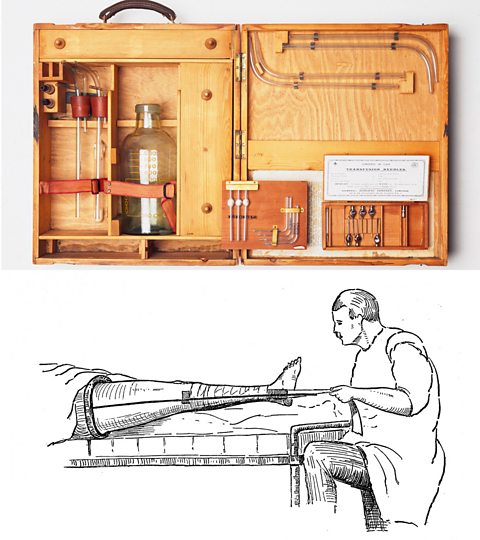Medical innovation in World War One
The wounds inflicted on millions of soldiers drove the development of new medical techniques and inventions.
Giving and storing blood
The British Army began the routine use of blood transfusion in treating wounded soldiers. Blood was transferred directly from one person to another. But it was a US Army doctor, Captain Oswald Robertson, who realised the need to stockpile blood before casualties arrived. He established the first blood bank on the Western Front in 1917, using sodium citrate to prevent the blood from coagulating and becoming unusable. Blood was kept on ice for up to 28 days and then transported to casualty clearing stations for use in life-saving surgery where it was needed most.
Technological innovation
Innovations developed in the First World War had a massive impact on survival rates – such as the Thomas splint, named after pioneering Welsh surgeon Hugh Owen Thomas, which secured a broken leg. At the beginning of the war 80% of all soldiers with a broken femur died. By 1916, 80 % of soldiers with this injury survived.
Speed of treatment
From January 1915 the British military medical machine moved closer to the front line. Casualty clearing stations were now better equipped and, crucially, more surgeons were closer to the battlefield. There were now fewer delays in administering potentially life-saving treatment. Soldiers with wounds that would have been fatal were now more likely to survive.
Top: First World War blood transfusion apparatus. Below: the Thomas splint introduced in 1916. Pictures courtesy of Getty Images and Wellcome Images.


Comments
Post a Comment